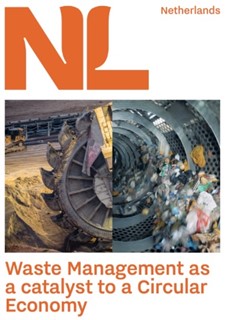
Australia and the Netherlands have a lot in common, but not their size. The Netherlands is only 60% the size of Tasmania, with around 18 million people living in a country of which 26% is below sea level. From early on, the risk of flooding has forced the Dutch to be innovative and work together.
Our lack of space has also limited the possibility to develop landfills. Again we had to be innovative and cooperate to come up with alternatives. With success: nowadays, we recycle 61% of our municipal waste and recover energy from 36%, with only around 3% going to landfill. This is mainly the result of a close cooperation between the government, research institutes, private companies and local stakeholders which started in the 1990s. We are now hitting the limits of sustainable waste management and are moving on towards a circular economy. By 2030 we aim to be 50% circular, by 2050 100%.
Becoming a circular country in a linear world makes no sense. This is why we extend a hand to Australia to work together on sustainable waste management and a circular economy. Let's exchange knowledge and experiences and make our quest for zero waste (or WasteBAN) our joint business.
For more on the Dutch approach towards waste management and the circular economy, we invite you to have a look at the video: Waste Management: Closing the global value chain and the brochure: Waste Management as a Catalyst to a Circular Economy. Both publications were developed by the Holland Circular Hotspot in 2022.